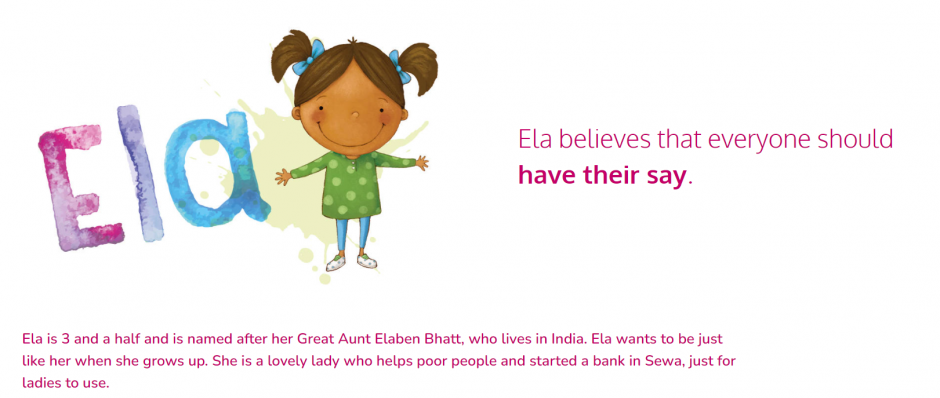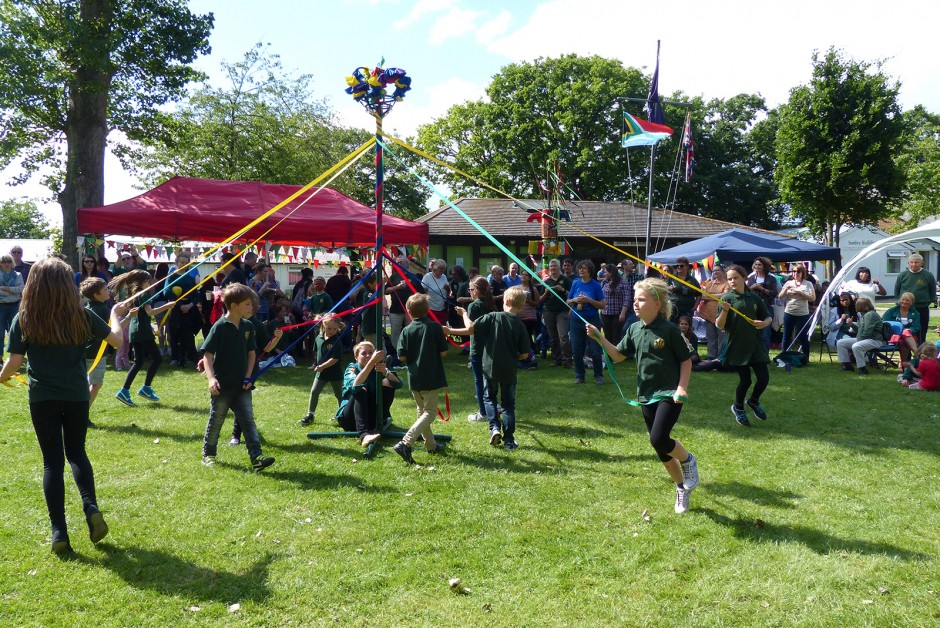The co-op movement grows and changes with each new generation – but what opportunities does it offer new families, children and young people in the early stages of life?
Maternity
During her first trimester, Anna was looking for a community. “In the first three months of pregnancy, your body is going insane, but you don’t share that with anybody. We have that cultural stigma around talking about early pregnancy.” After some searching, she found a support group run by Sheffield Maternity Cooperative (SMC), which offers advocacy, information and holistic support.
Several of the SMC team are experienced midwives but they are clear that their work is not a substitute for an NHS midwife – for example, they don’t carry out any physical checks. Instead they complement the work of the NHS by helping people to navigate systems, make informed decisions and feel part of a supportive network.
For Anna, this included having a member of the SMC team, Phoebe, join a meeting with her consultant to discuss plans for the birth of her son. “She was awesome, because she didn’t go in there going, ‘I’m a professor of midwifery, please listen to me’, she went as a friend. And that was exactly what I needed. I needed a friend who was there for me, who knew how to use the language and speak to power, rather than being another person speaking instead of me.”
Related: How retail co-ops are engaging young members
SMC’s work has a focus on those whose voices are often left out of mainstream maternity care, working across issues of race, migration and LGBTQ families, as well as loss and abortion to promote culturally safe healthcare.
Anna describes herself as an “unknown quantity” in the eyes of the NHS: “I’m not British, I’m gender nonconforming, I’m on the autistic spectrum, I’m highly educated. It’s a combination of factors where I thought, if I go into the mainstream maternal support system, they will have no idea what to do with me.”

With SMC, Anna always feels seen as an individual, and she attributes that approach to SMC’s co-operative nature.
Born in Germany before the fall of the Berlin Wall, Anna had some sense of what co-ops could look like before joining SMC, but not within the context of British culture. “I didn’t necessarily think it was for people like me”, she says. “I thought it was more for younger people with a stronger faith in ideas and ideals. I didn’t think it could be so practical.”
SMC chose the co-op structure over the charity model so it could respond quickly to community needs, says Phoebe. “A lot of the stuff we do is families coming to us and going, ‘we need this’ and we go, ‘right, we’ll do that then’.” For example, it set up a support group for families with babies in special care units.
The non-hierarchical structure of SMC enables members to drive the action, with working groups taking projects forward while maintaining dialogue with the whole group.
Related: Caring for the movement’s youngest during Covid-19
Anna’s autism means she can find social structures and power dynamics confusing, but this is not an issue with SMC. “I have spent my entire life getting into trouble with all sorts of structures that are hierarchical in their nature,” she says, “so not having this issue for the first time ever is really quite lovely.”
Putting relationships before structure means there is a limit to the co-op’s size. “One of the ideas about remaining small was that we’d never have such a big group that we couldn’t have personal relationships with everyone involved in the co-op, including user members,” says Phoebe. Instead of scaling up indefinitely, SMC wants to support the launch of other maternity co-ops elsewhere. It is developing resources for this – and, as an educator, Anna plans to contribute.
Childcare
When young families need childcare there are a variety of co-operative options, from informal local networks to large scale nurseries.
Informal co-operative childcare arrangements are widespread, with friends and family often sharing responsibilities. Somewhere in between that and more formalised childcare, parents are using new tech to organise “babysitting co-ops”. Platforms such as Komae and Sitting Around in the US facilitate the exchange of childcare among families, which would previously have been co-ordinated on a smaller scale without digital tools. There are also a number of parent-led co-op childcare centres around the world which draw on volunteer hours from parents to support the work of professionals.
The UK has a number of childcare co-ops, including independent parent-led organisations, and a network of 48 centres run by Midcounties Co-op. Its Little Pioneers nurseries and preschools promote the values of democracy, openness, equality and social responsibility to children, using a range of characters – Ping, Ebo, Alice, Charlie and Ela. The character of Ela is named after “her Great Aunt” Elaben Bhatt, giving children who attend the centre a chance to learn about Ela Bhatt, founder of India’s Self-Employed Women’s Association (SEWA).

In 1986, SEWA set up the Sangini Child Care Workers Cooperative (SCCWC) to provide affordable childcare for its members, who are also the child care workers providing the service. SCCWC has been instrumental in helping SEWA’s members generate and increase their income.
Related: Co-op Group urges help for the ‘ghosted generation’ of youth
Foster care co-ops are also a key part of the landscape; there are several in the US and just one in the UK, the Foster Care Co-operative (FCC), launched in 1999. One of the FCC’s foster carers, Dave, shared his story with the organisation, saying he and his partner Mary were impressed with the ethos of the company and how surplus income goes straight back into the care of the children. Dave was also impressed with the energy and vision of the co-op’s founder Laurie Gregory, who set up the co-op after becoming disillusioned with the mainstream care system.
Education
As children reach school age, there is a range of formal and informal co-operative initiatives. In Italy, the Reggio Emilia approach to early years education promotes experiential, child-led learning with an emphasis on socialising and expression. It was developed shortly after WWII in the Emilia Romagna region, famed for its high concentration of co-ops. This thinking has inspired co-ops around the world, such as Peopleplace, a preschool in the US.
In the UK, there has been talk of a quiet revolution in schools over the past 15 years, by the Co-operative Schools Society (CSC). CSC was formed in 2009 as a national body for the co-operative education sector, which consists of hundreds of co-operative learning communities. They say co-op schools offer “an alternative and ethical model for schools by putting the learning community at the centre of a strategic body overseeing the work of education development”.
Related: Young people don’t know it yet, but co-ops are just what they’re looking for
Co-op schools in the UK take one of two forms – co-operative foundation trust or co-op academy. The co-op academy structure established a form of independent state school that could be run with adherence to the co-op values and principles. The Co-op Group currently runs 27 academies across Greater Manchester, West Yorkshire and Staffordshire and Merseyside.
Youth work and entrepreneurship
The Co-op Group runs a variety of youth engagement programmes, including Belong, a national effort to help young people overcome loneliness through co-operative action. And it has a Youth Advisory Group to bring more youth voices into decisions made by the Group, such as where to direct spending for youth projects.
The UK is also home to the Woodcraft Folk, which runs groups across the country and a national AGM, this year being held at the Common Ground camp event, which will gather around 3,000 young people from 18 countries.

In Malaysia, a school-based youth engagement initiative has been taking place since 1968. School co-ops – that is, co-ops run within a school – teach entrepreneurialism through a collaborative lens, building soft skills such as communication and time management, alongside basic finance. Students buy shares in the co-op when they join the school, becoming a member of the co-op and using its services, as well as having the chance to get involved in its the governance and management.
Koperasi Mara Junior Science College in Penang has a co-op shop, laundry service, cafe, nursery and a van rental, which generates income for the school. Vice principal Munami Mohamad says, in a video co-produced with aroundtheworld.coop: “We generate our own income, we have our own funds and we can channel our funds to activities for the students so they don’t have to rely on the government.”
Related: Q&As for 2022 – Deborah Osei-Mensah, Fairtrade youth ambassador
Co-op member Nurin Aina Binti Mohd Asri, says: “The co-operative has really taught me to achieve my dream, which is to become an accountant.” Because her school is a boarding school, the school co-op is a huge part of the students’ lives. “We are really taking care of each other. So basically, the co-operative is like a main point where we start to learn about helping each other and enjoying life with the community.”
Moving toward young adulthood, the International Co-operative Alliance formed a Youth Network in 2003 to offer advice, support and representation to the co-op youth movement, which has been running annual Global Youth Forum events, mapping co-op youth initiatives and leading a scheme to replicate existing co-ops and create new youth co-ops worldwide.
On its website, the network says: “Young people are the leaders of tomorrow – but they are also leaders, organisers, carers, workers and thinkers today and need to be involved in shaping policies that affect them – today AND tomorrow.”